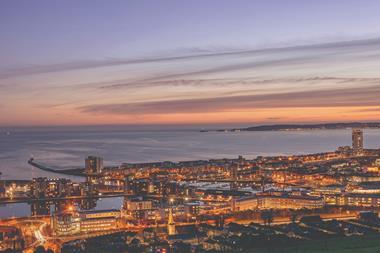Much has been said about future-proofing our cities. How do we do it? One solution is the concept of the universal building – one that, when designed properly upfront, can regenerate over time, adapting to the needs of today as well as the unforeseen needs of tomorrow.

This ‘universal building’ can transition between parking, residential, workplace, hospitality and senior living – with common building systems and structures positioned to meet changing demands.
The regenerative building rethinks the concept of the core office building – from the floorplates, mechanical, electrical and plumbing (MEP) and columns, to technology and the podium and parking structure – to deliver the most resilient, cost-effective and sustainable solution.
The last year has shown us how vital it is for investors, developers, owners and designers to quickly pivot in a way that brings the best return on investment, a sustainable building solution and a socially safe environment. What was once a fully occupied office building, residential tower, hotel or retail plaza may now look completely different. Rather than demolish (with the accompanying costs and environmental impacts associated), why not consider how to adapt?
While maintaining standard floor-to-floor heights, floorplates and MEP is vital to regenerative buildings, another key component is the universal podium and the variety of amenities any usage can offer. As much as a universal building can solve many arising issues, there are attributes to the systems that may be beyond the typical typology norms relative to floor-to-floor heights, MEP systems and floorplate sizes.
Justifying these anomalies rests in the long-term upside of owning a building that cannot become a ‘stranded asset’ – one that no longer meets the needs of growing ESG-led investments, the new classification of obsolete properties.
Reconfigured car parks
In high-density urban cities, car parks often sit on valuable land that could generate a much greater return on investment if redeveloped to meet changing requirements. Indeed, the need for vehicles is changing, which is why a regenerative building concept makes sense. Ground-level parking spaces could convert into store fronts and mid-level parking floors could transition into office, residential or hotel spaces. Parking structures can even be reconfigured to include parks and green spaces.
The most sustainable building is the one you don’t have to build, as building reuse almost always yields fewer environmental impacts than equivalent new construction. The range of environmental savings varies widely – based on building type, location and assumed level of efficiency. Savings from reuse are up to 46% over new construction when comparing buildings with the same energy performance level.
Embodied emissions in buildings, which are mostly in the envelope and the structure, can also account for a large portion of emissions from buildings, so retaining these aspects is important. It is also possible to keep an existing structure and update the envelope so operational carbon is reduced by an increased envelope performance.
A good design firm challenges the status quo; a great one changes the way we live for the better. We know that, through regenerative building, we can play a key role in increasing resiliency, supporting sustainability and strengthening our communities.
John Badman is principal at architecture, planning and design firm CallisonRTKL





























No comments yet